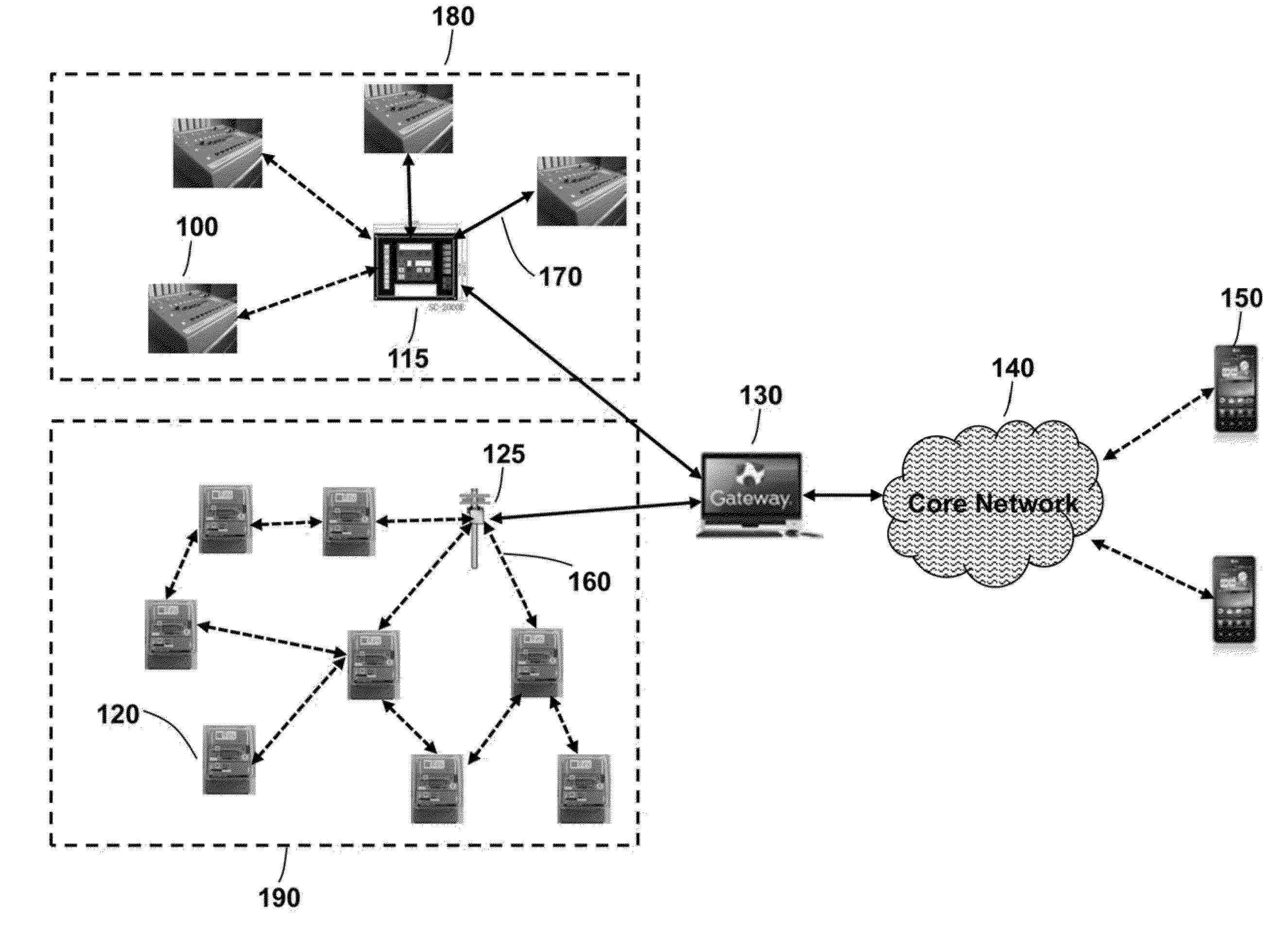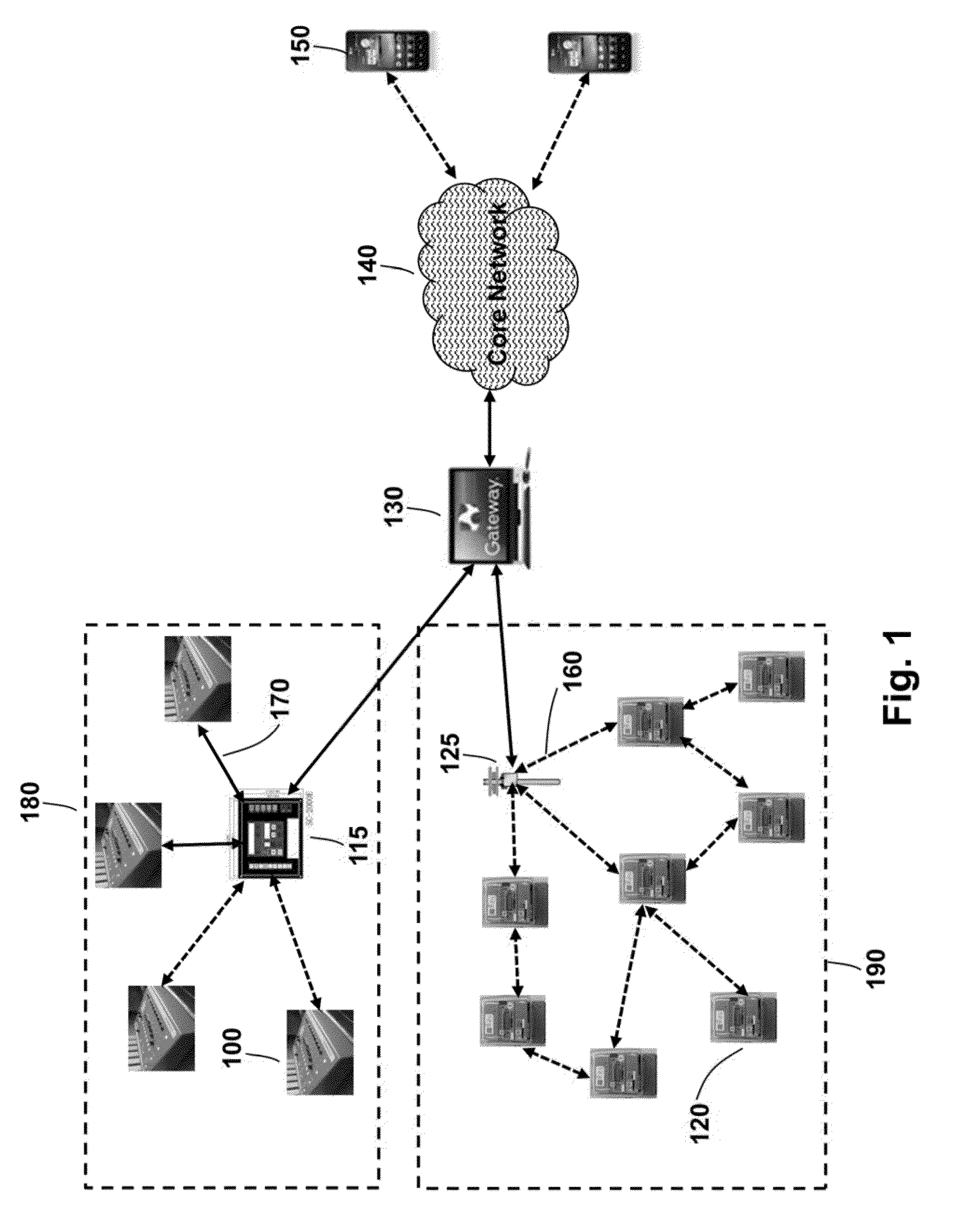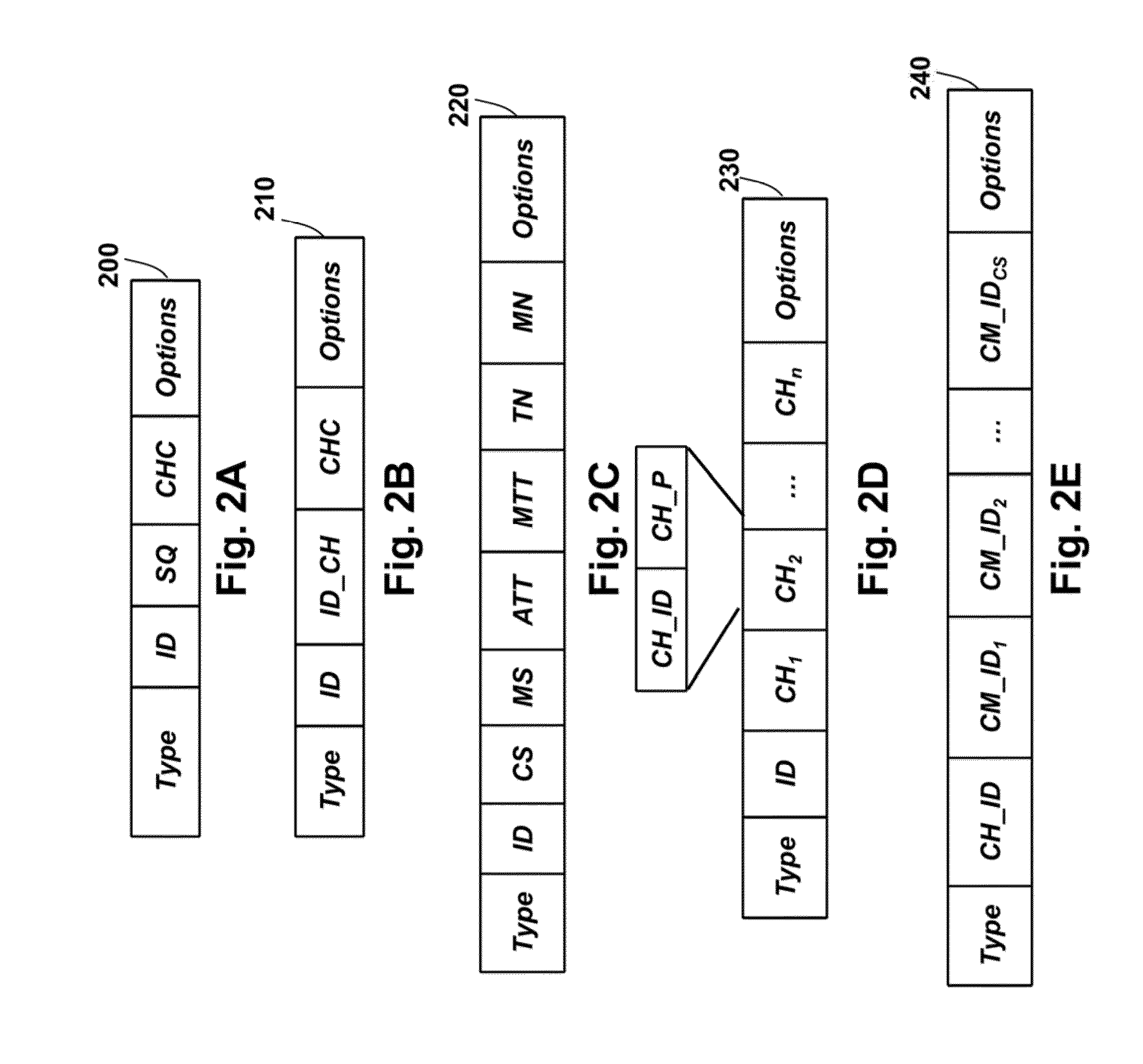Method for Clustering Devices in Machine-to-Machine Networks to Minimize Collisions
a communication device and network technology, applied in the field of communication networks, can solve the problems of large heterogeneous devices in a m2m network, small devices such as temperature sensors, and achieve the effect of minimizing collisions among nodes
- Summary
- Abstract
- Description
- Claims
- Application Information
AI Technical Summary
Benefits of technology
Problems solved by technology
Method used
Image
Examples
Embodiment Construction
[0032]FIG. 1 shows an example of M2M network with heterogeneous nodes according to embodiments of our invention. Transceivers (nodes) 100 associated with devices communicate with a controller 115. Nodes 120 associated with, sensors, e.g., smart meters 120, send data to a concentrator 125. The controller 115 and concentrator 125 communicate collected data to a gateway 130, which communicates with a core network 140, which in turn, communicates data with applications 150. Nodes can communicate via a wireless link 160 or a wired link 170, or both. The M2M network can be organized into different topologies, e.g., a star network 180, or a mesh network 190 with relay and router nodes as needed.
[0033]The focus of our invention is on the nodes (transceivers). The type of devices, machines, sensors, etc. that are associated with nodes is less important. However, in most cases, the capabilities and characteristics of the nodes depends on the type of devices that are associated with the nodes....
PUM
 Login to View More
Login to View More Abstract
Description
Claims
Application Information
 Login to View More
Login to View More - R&D
- Intellectual Property
- Life Sciences
- Materials
- Tech Scout
- Unparalleled Data Quality
- Higher Quality Content
- 60% Fewer Hallucinations
Browse by: Latest US Patents, China's latest patents, Technical Efficacy Thesaurus, Application Domain, Technology Topic, Popular Technical Reports.
© 2025 PatSnap. All rights reserved.Legal|Privacy policy|Modern Slavery Act Transparency Statement|Sitemap|About US| Contact US: help@patsnap.com



